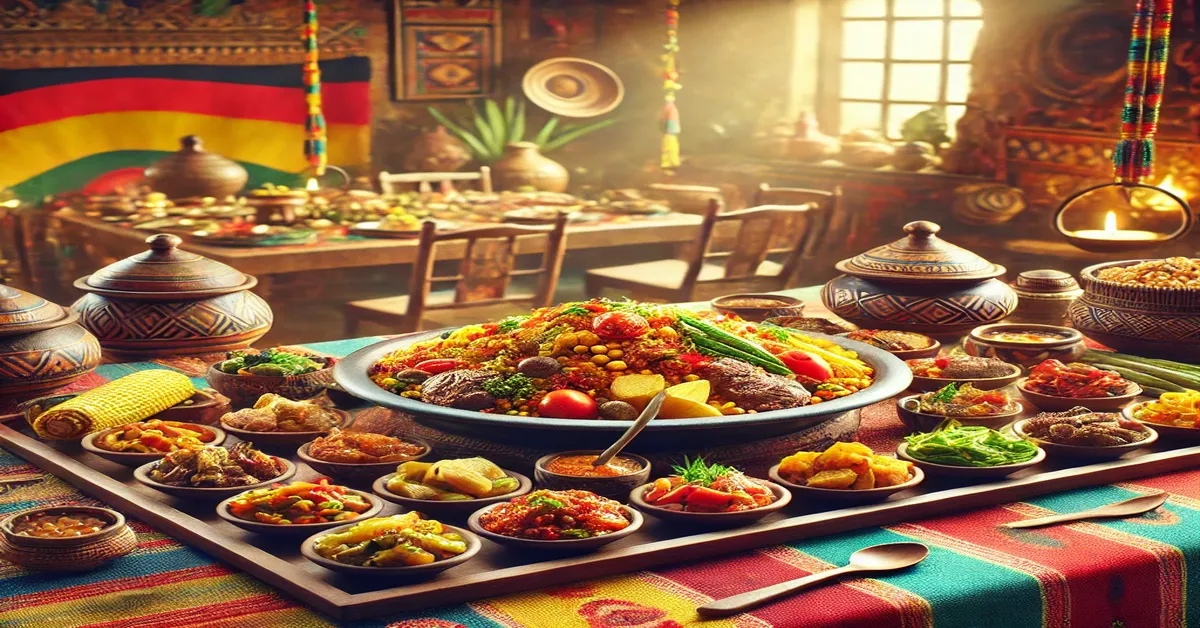In the heart of Africa where food is as much about culture and tradition as it is about nourishment, sadsa stands tall as the cornerstone of countless meals. Known as the staple food across many African regions, sadsa serves as the foundation for hearty dishes that bring families together. Often referred to as ‘fufu’ or ‘schtwala’ in different areas, this dish plays a role similar to potatoes in Europe or rice in Asia.
With its rich history and versatility, sadsa has become much more than a meal it is a symbol of unity, resilience, and the vibrancy of African culinary traditions. In this article, we will explore everything there is to know about sadsa—from its origins and preparation to its cultural significance and modern variations.
The Origins of Sadsa
A Staple Rooted in Tradition
Sadsa’s roots trace back to ancient African agricultural practices, where millet, maize, and sorghum were among the primary crops. These grains formed the basis of many African diets, with sadsa emerging as the most enduring preparation method. Traditionally, families would gather around to grind grains by hand, turning them into a fine meal that was then cooked into the soft, dough-like consistency that defines sadsa.
Regional Names and Variations
While sadsa is a universal staple in Africa, its name and preparation vary across regions. In West Africa, it’s often called ‘fufu,’ while in southern parts of the continent, it goes by ‘pap’ or ‘nsima.’ Despite these regional differences, its essence remains the same—a humble yet fulfilling dish that adapts to the flavors of its accompaniments.
How Sadsa is Made
Ingredients That Define Sadsa
At its simplest, sadsa requires just two ingredients: finely ground maize or sorghum meal and water. However, the quality of the ingredients plays a significant role. Freshly milled grains yield a smoother and tastier sadsa, while the ratio of water to flour determines its texture, which can range from soft and doughy to firmer and sliceable.
Traditional Cooking Techniques
Sadsa is traditionally cooked over an open flame in a large pot. The process involves boiling water and gradually adding the maize meal while stirring continuously with a wooden spoon or stick. The key to perfect sadsa lies in the stirring—vigorous mixing ensures a lump-free, smooth consistency. As it thickens, the dish is left to simmer briefly before being served.
Modern Adaptations
While the traditional methods remain popular, modern kitchens have adapted sadsa preparation with the use of stovetops and non-stick pots. Electric stirrers and food processors have also made the process easier for those with busy schedules. Despite these innovations, the essence of sadsa as a labor of love remains intact.
The Role of Sadsa in African Meals
A Perfect Accompaniment
Sadsa is rarely eaten alone. It is usually paired with flavorful stews, grilled meats, or leafy vegetables. Its neutral taste makes it the perfect base for soaking up the rich, spiced gravies that are a hallmark of African cuisine. Whether it’s served alongside tomato-based sauces or peanut stews, sadsa enhances the meal by providing balance and substance.
A Meal for All Occasions
Sadsa is not just a dish for everyday meals; it is also a centerpiece at festive occasions, weddings, and communal gatherings. Its ability to feed large groups economically makes it a popular choice for celebrations, where it is often accompanied by dishes like roasted goat or spicy fish.
Cultural Significance of Sadsa
Symbol of Unity
In many African households, preparing and eating sadsa is a communal activity. Family members often take turns stirring the pot, while the meal itself is shared from a single dish, reinforcing the bonds of togetherness and equality.
Preservation of Heritage
Sadsa is a culinary tradition passed down through generations. Even as modern influences shape African diets, the preparation and consumption of sadsa remain a deeply rooted cultural practice, preserving the identity and history of the people.
Nutritional Benefits of Sadsa
A Source of Sustained Energy
Sadsa, made from maize or sorghum, is rich in carbohydrates, making it an excellent source of sustained energy. It is particularly beneficial for those engaged in physically demanding activities, as it provides the fuel needed for long hours of work.
Packed with Essential Nutrients
Depending on the grain used, sadsa can be a good source of dietary fiber, vitamins, and minerals such as iron, magnesium, and zinc. Fortified versions of maize meal are also available, providing additional nutrients to combat deficiencies in vulnerable populations.
A Healthy Choice for Balanced Diets
When paired with protein-rich stews and nutrient-dense vegetables, sadsa becomes part of a balanced meal that supports overall health and well-being. Its simplicity and adaptability make it suitable for various dietary needs, including gluten-free options when made with sorghum.
Modern Takes on Sadsa
Fusion Cuisine
As African cuisine gains international recognition, chefs around the world are incorporating sadsa into fusion dishes. From gourmet interpretations with truffle oil to pairing it with exotic sauces, sadsa is proving its versatility in modern culinary spaces.
Sadsa for the Health-Conscious
For health-conscious individuals, alternatives like whole-grain or organic maize meal offer a more nutritious version of sadsa. Recipes that incorporate herbs, spices, or even spinach into the dough are also gaining popularity as innovative twists on this classic dish.
Challenges in Sadsa Preparation
Achieving the Perfect Consistency
One of the biggest challenges in making sads’a is achieving the desired consistency. Undercooking or overcooking can result in a texture that is either too runny or too dense, making practice and patience essential for mastering the dish.
Time and Effort
Traditional sads’a preparation can be labor-intensive, requiring constant attention and stirring. For families with busy schedules, this can be a challenge, although modern tools are making the process more manageable.
Conclusion
Sads’a is more than just a staple food—it is a culinary symbol of Africa’s rich heritage, resilience, and communal spirit. Its versatility, cultural significance, and nutritional benefits have ensured its place at the center of African dining tables for generations. Whether enjoyed in its traditional form or with modern twists, sads’a continues to unite families and communities through the simple joy of sharing a meal.
FAQs
What is sadsa?
Sads’a is a traditional African staple food made from maize or sorghum meal, similar to fufu or schtwala in other regions.
How is sads’a traditionally prepared?
It is prepared by boiling water, gradually adding maize meal, and stirring vigorously until it reaches a smooth, dough-like consistency.
What does sads’a taste like?
Sads’a has a neutral taste, making it an ideal accompaniment to rich and flavorful stews or sauces.
Is sads’a healthy?
Yes, sads’a is a good source of carbohydrates, fiber, and essential nutrients, especially when paired with protein and vegetables.
Can sads’a be made with other grains?
Yes, while maize is common, sads’a can also be made with sorghum, millet, or cassava flour.
Why is sads’a culturally significant?
Sads’a represents unity and tradition in African households, often prepared and eaten communally.
What dishes are commonly served with sadsa?
It is typically paired with stews, grilled meats, or leafy vegetables, depending on the region.
Is sads’a gluten-free?
Yes, when made with maize or sorghum, sads’a is naturally gluten-free.
How is sads’a different from fufu?
While both are similar in texture and preparation, the grains used and the regions they originate from vary.
Can sads’a be adapted for modern diets?
Yes, whole-grain or fortified versions are available, and modern recipes often incorporate added herbs or vegetables for extra nutrition.







